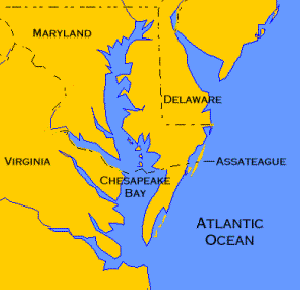Farmers on Maryland’s Eastern Shore are breathing a sigh of relief on news that newly sworn-in Gov. Larry Hogan (R) plans to scrap regulations targeting agricultural runoff into the Chesapeake Bay. Hogan’s announcement came as outgoing Gov. Martin O’Malley (D) was scrambling to get the regulations finalized before leaving office Jan. 21.
“The first fight [when I take office] will be against these politically motivated midnight-hour phosphorus management tool regulations that the outgoing administration is trying to force upon you in these closing days,” Hogan said in a speech before the Maryland Farm Bureau (Washington Times, Dec. 9) “We won’t allow them to put you out of business destroy your way of life, and decimate your entire industry.”
Hogan’s reference is to what is known as the Phosphorus Management Tool (PMT). Almost four years in the making, the PMT is the O’Malley administration’s plan to have farmers on the Chesapeake Bay’s Eastern Shore reduce, if not completely eliminate, the use of chicken manure as a fertilizer. Phosphorus, along with another ingredient found in manure, nitrogen, has been blamed for polluting local waterways, including the creation of oxygen-deprived “dead zones” in the bay. Among other things, the regulations would require farmers to determine how much chicken manure can be safely applied to their land, and to calculate such things as the distance from their land to bodies of water, whether their field is on a slope, and the density of the soil.
as the Phosphorus Management Tool (PMT). Almost four years in the making, the PMT is the O’Malley administration’s plan to have farmers on the Chesapeake Bay’s Eastern Shore reduce, if not completely eliminate, the use of chicken manure as a fertilizer. Phosphorus, along with another ingredient found in manure, nitrogen, has been blamed for polluting local waterways, including the creation of oxygen-deprived “dead zones” in the bay. Among other things, the regulations would require farmers to determine how much chicken manure can be safely applied to their land, and to calculate such things as the distance from their land to bodies of water, whether their field is on a slope, and the density of the soil.
Rewriting the Regulations
Farmers fear that the regulations will force them to abandon chicken manure in favor of far more expensive commercial fertilizers. Dealing with the regulations’ red tape, and switching to the use of commercial fertilizers, would cost Eastern Shore $22 million, according to a study by Salisbury University. After assuming office, Hogan is expected to rewrite the regulations so as to lessen the burden on farmers while reducing phosphorus levels in the bay.
Environmentalists, led by the Chesapeake Bay Foundation, blasted Hogan’s plans. “We’ve done all the easy things,” Alison Prost, the group‘s executive director told the Washington Post (Dec. 15). “If we want to be clean, not just status quo, bur clean – we need to do the hard things.” There is speculation that the Democrat-controlled legislature will try to pass a bill reinstating O’Malley’s regulations, setting up a confrontation with the new governor.
In its just-released “State of the Bay 2014 Report,” the Chesapeake Bay Foundation found that the bay’s water quality has improved slightly over the past two years but that “many local rivers, streams and the Chesapeake Bay are still polluted,” said William C. Baker, the foundation’s president (Washington Post, Jan.6).
Asked by the Post what the new administration thought about the study, a spokesman for Hogan said that it’s time for a new approach. The study, he said, “is just the latest to conclude that the current strategy for restoring and protecting our greatest natural asset and America’s largest estuary is not working.”
True to his word, Hogan cancelled the regulations shortly after his swearing-in. Hogan’s move was welcomed by Kevin Anderson, who grows corn and soybeans on 2,800 acres in Princess Anne, Md. He told the Wall Street Journal (Jan. 23) that the O’Malley administration’s rules, which were to be phased in over six years, would have cost him $187,000 a year – the likely expense for buying commercial fertilizer.
The Real Threat to Chesapeake Bay
While claiming to be concerned about the ecological future of the bay, Gov. O’Malley and the Chesapeake Bay Foundation enthusiastically support a project that threatens to do irrevocable harm to the estuary and surrounding wildlife. Both back the Great Bay Wind Center, a renewable-energy project that would install 25 690-foot wind turbines overlooking the bay in rural Summerset County. Another 25 giant turbines would be erected in a second phase of the project. The site lies along the Atlantic Flyway, which is used by tens of thousands of migrating birds, and is located near two wildlife refuges. Local residents opposed to the project point out that untold numbers of foraging bald eagles could be slaughtered in the turbines’ spinning rotors.
